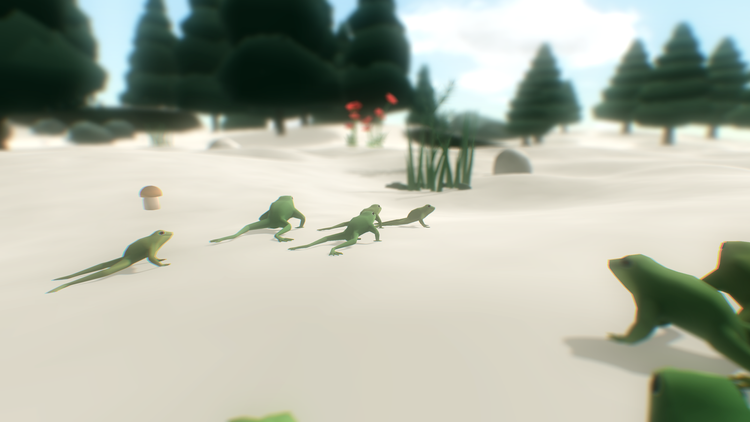A chat with Simogo’s Simon Flesser about their new Sailor’s Dream

Simogo had a monstrous 2013, releasing a pair of the year’s best games in Year Walk and Device 6. So, while it’s only been a year, it still feels like they’ve been awful quiet in 2014. But the pair of Swedish developers is close to breaking that silence with this week’s release of The Sailor’s Dream.
“It does feel like a long time to us, too,” said Simogo’s Simon Flesser (above left with Simogo co-founder Magnus Gardebäck). “We said early on with Year Walk that it’d be nice to make a set of three games, but it was half-jokingly. We really never set out to make something that builds on the success of this or that. I think it’s more about making use of the knowledge and experience rather than building something on top of previous work.”
Instead of a haunted winter night, or a paranoid fantasy of spycraft and sinister technology, The Sailor’s Dream takes place in a quieter, more elegiac seaside setting. The quiet guitar arpeggios of the reveal trailer speak of longing and adventure rather than the insistent atmosphere of foreboding in Simogo’s previous two games.

“We really just wanted to make something that felt very warm and human,” Flesser says, referring to his Simogo partner Magnus “Gordon” Gardebäck. “We don’t see that a lot in games, and when you do it’s sugar-coated kids or Hollywood stuff. I knew that we were really keen on doing something that was a lot more philanthropic, warm and even romantic, and the ocean provides a really nice setting for that.”
Regardless of the genre-hopping—horror to technological conspiracy to seaside fairy tale—Simogo’s games are united by a fondness for systems of secret knowledge. By segmenting the narrative into discrete bits, and asking the player to find, unlock, and decode those bits Simogo games use, in effect, epiphany as a mechanic.
Flesser describes this as the thrill of “getting a dossier in your hand and being told to piece together the case,” a way to ask the player to take a role in building a story rather than being a passive recipient of a narrated experience. Asking the player to unlock the experience “adds friction, which makes it more engaging. Because it asks something of the participator, and so they, hopefully, become more invested.”
it wouldn’t be much like Simogo to just make a sequel
If The Sailor’s Dream takes a step away from its predecessors, it might be in de-emphasizing the game’s puzzles as obstacles to progress, as things to be figured out. While The Sailor’s Dream uses similar visual and navigational tools to layer individual two-dimensional scenes into a surprisingly functional simulacrum of a three-dimensional space, the world the game builds exists much more for its own sake rather than as a place to store challenges and treasure chests.
As Flesser points out, there are elements of The Sailor’s Dream that seemed to be trying to work their way out in earlier games. Device 6, after all, is built on the secrets within a lighthouse in an island on an endless ocean, but The Sailor’s Dream was never really intended as a sequel. It’s a different game with a different voice—or rather, a series of voices, hidden in bottles or overheard from clandestine shortwave radio broadcasts.
After all, it wouldn’t be much like Simogo to just make a sequel. “I think work-wise we’re really proud of daring to go with almost every crazy idea we had,” Flesser says. Even if it meant asking themselves “Would it be cool to have seven songs with vocals by an English folk singer?”
It is. But since this is a Simogo game, you’ll have to find them.



